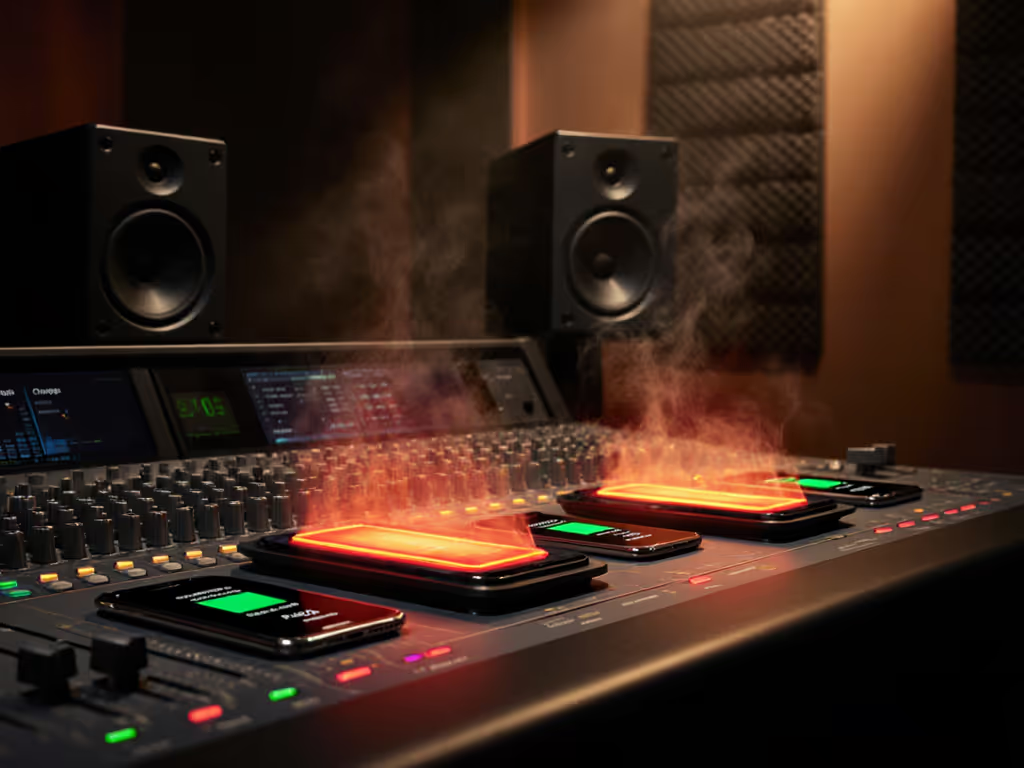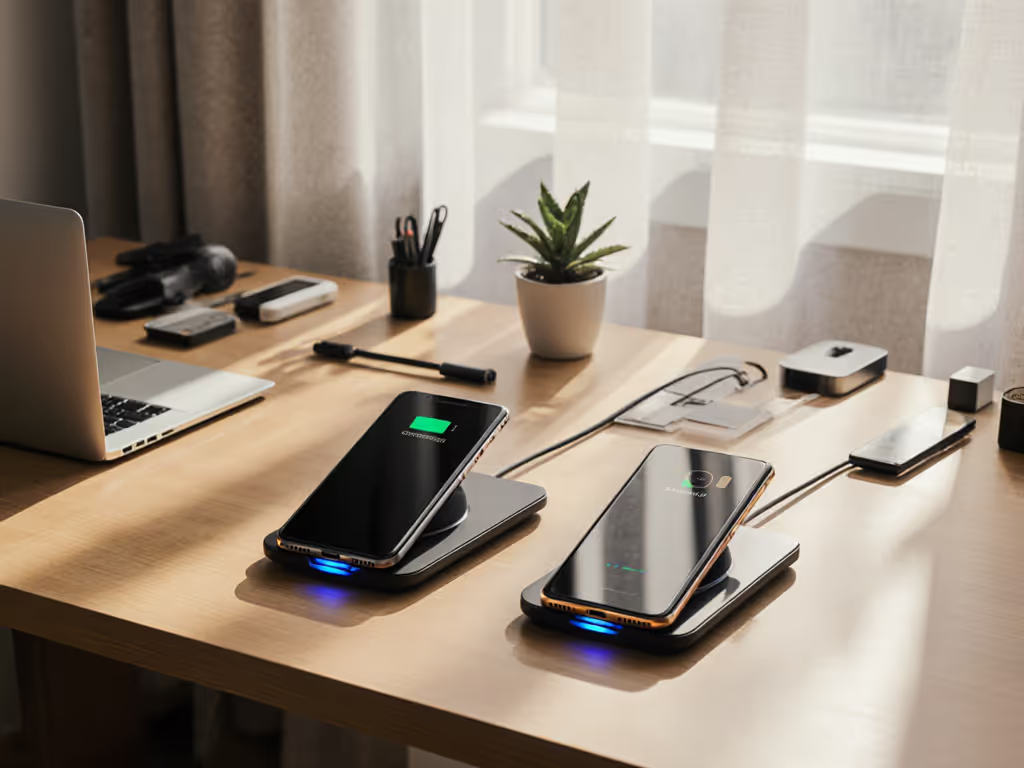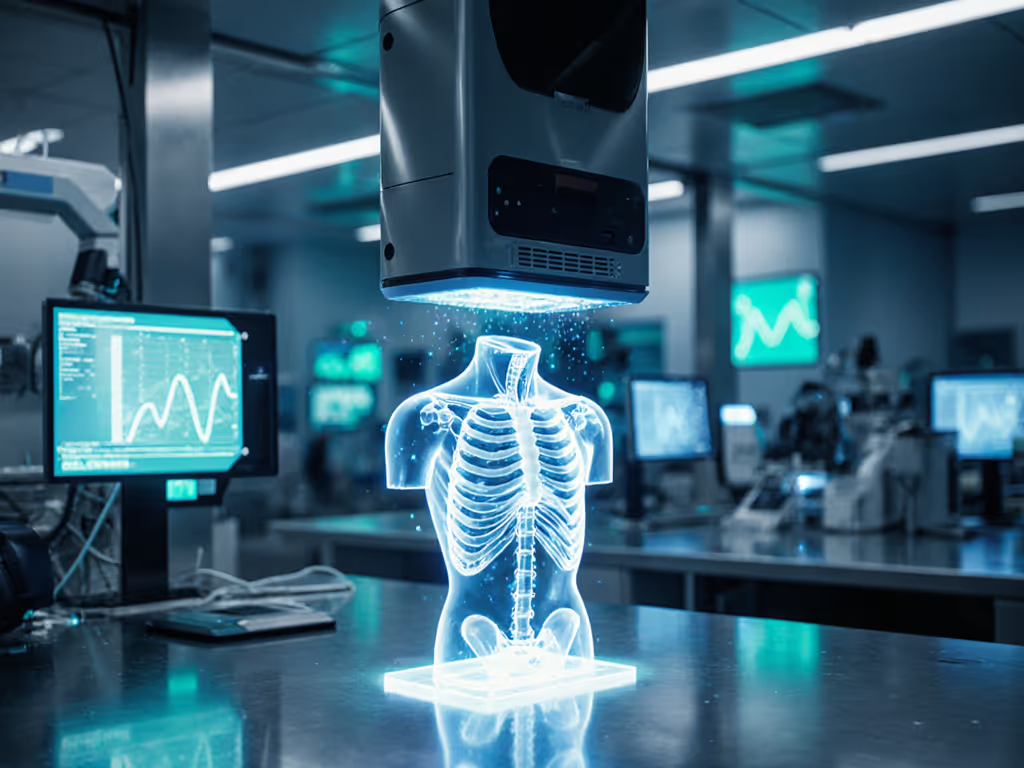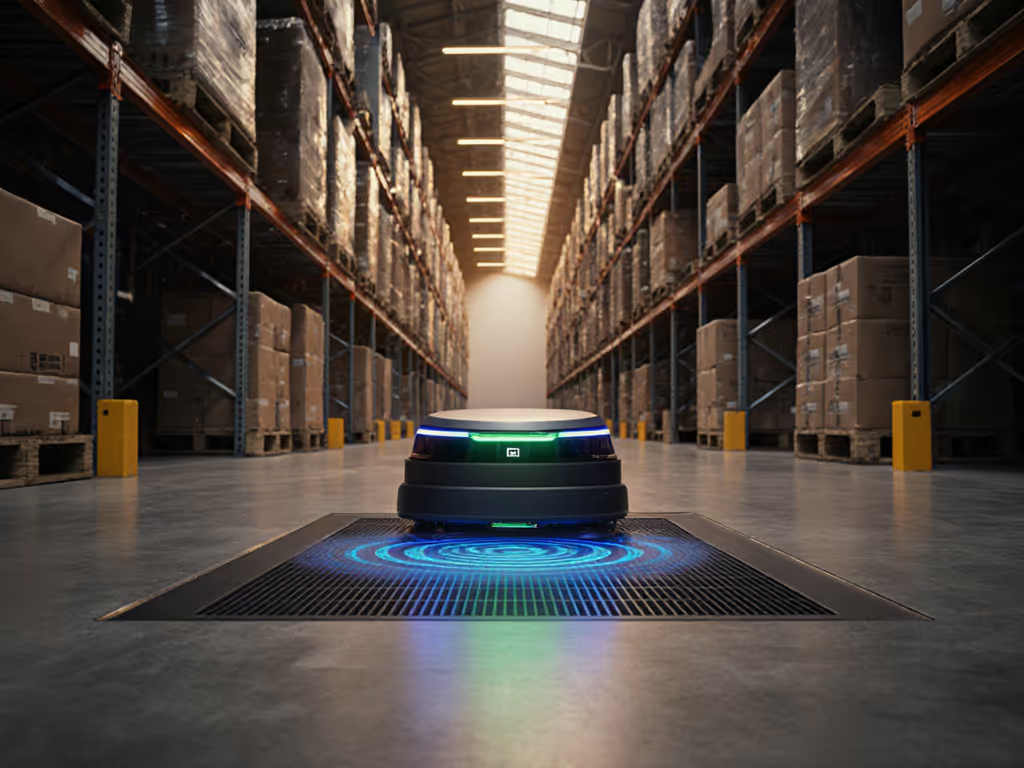
NASA's Lunar Wireless Charging Cleared for Flight
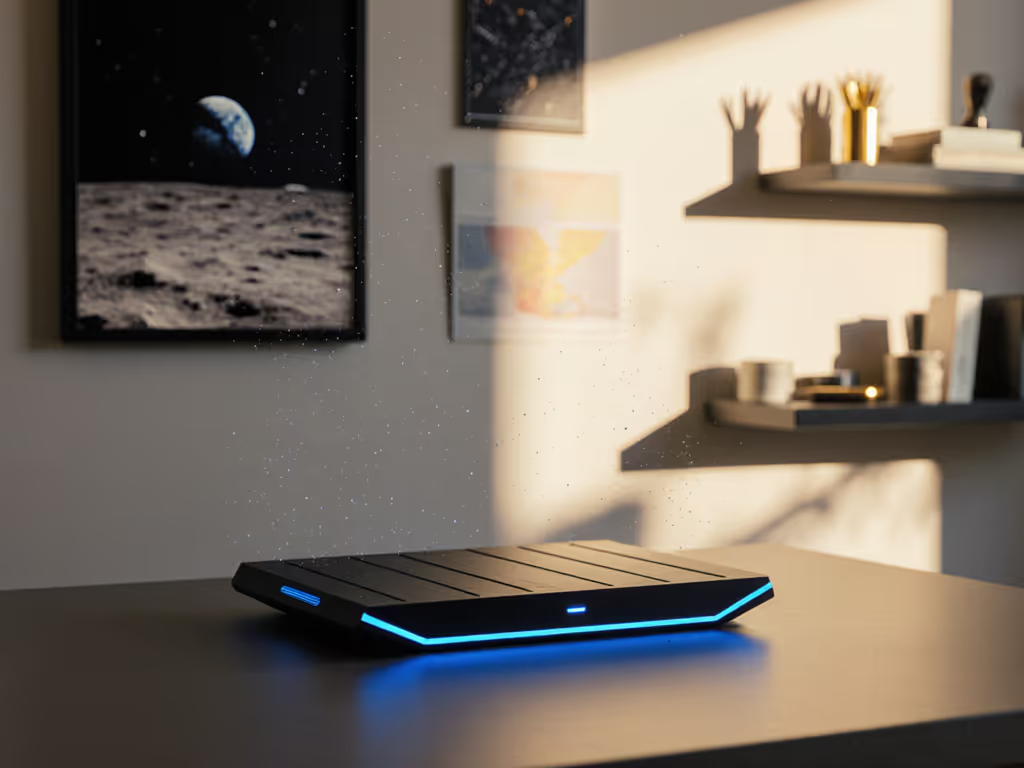
When NASA certified the first wireless charger for lunar missions last month, I didn't just see space tech, I saw the solution to your nightstand chaos. That NASA wireless power system, designed to survive 14-day lunar nights and moon dust storms, nails what we all crave at home: charging that's so obvious, your guests won't fumble with cables before breakfast. Let's talk about why this matters for your living room, not just the moon.
The Problem: Why Your Home Charging Feels Like a Space Mission Gone Wrong
You've felt it: that moment when your partner asks, "Which pad is for the watch? Is this one hot?" Or when your Airbnb guest nervously pats your nightstand like it's a bomb defusal kit. Sound familiar? That's because home charging today mirrors early lunar planning: fragmented ecosystems where devices fight for power, misalignment throttles speed, and dust (yes, your dust!) degrades performance. Worried about heat or battery wear? Read our wireless charging safety and battery myths for evidence-based answers. Just like moon rovers faced abrasive regolith jamming connectors, your charging ports collect pocket lint and crumbs. Both scenarios turn reliable power into guesswork.
NASA's engineers confronted identical human anxieties during lunar testing. When WiBotic's team covered their rover power systems in synthetic moon dust (developed by the University of Washington), they didn't just check electrical specs, they verified user confidence. Would a weary astronaut panic if the charger looked alien? Spoiler: Their solution prioritized clarity over raw wattage. That's why Astrobotic's final design uses color-coded pads and audible alignment tones, making power feel safe to touch.
Agitate: The Anxiety Cycle Your Current Setup Fuels
Think about your nightstand right now. Is it a jungle of cables where one device's fan noise keeps you awake? Do you unplug your phone at 80% because it's too hot? That's not paranoia, it's baked into poorly planned space exploration technology for Earth. Most home setups commit three critical sins:
- The Mystery Zone: Unclear placement = hesitation. "Which coil works with my case?" causes more friction than slow charging.
- The Dust Trap: Crumbs in ports degrade contact, forcing you to wiggle cables (just like lunar dust killed physical connectors).
- The Wattage Mirage: Ads boast "25W speeds!" but ignore your weak power brick or case thickness, real transfer rates plummet.
I've designed charging stations for luxury hotels where guests would rather not charge than risk "breaking" something. One CEO told me his team avoided the lobby's wireless pad because its blue LED felt "like a security camera." His anxiety mirrored lunar engineers' fears: If power isn't psychologically safe, it's useless.
Solve: Borrow NASA's Blueprint for Calm, Guest-Ready Zones
Here's the golden insight from Astrobotic's moon mission: reliability comes from placement, not peak specs. Their wireless system succeeded by standardizing where and how rovers dock, not by chasing maximum watts. Your home needs the same mindset. Let's map your zones using NASA's playbook:
Step 1: Define Your "Landing Zones" (No Rocket Science Needed)
Astrobotic's lander has specific charging pads marked with alignment guides. Copy this:
-
Nightstand Zone: One dedicated spot for all overnight devices. Use a multi-coil pad (like Qi2-certified models) so phones/earbuds just work without hunting for coils. If you juggle phones, earbuds, and watches, start with our multi-device wireless charging pads guide. Pro tip: Add a tiny label under the pad: "All devices welcome." My dad's sigh of relief when he saw that in my guest room? Exactly why NASA added tactile guides to their lunar pads.
-
Entryway Zone: Treat this like a lunar VSAT platform, always ready. Mount a vertical charger where keys/phone meet. No exposed cables, route them through wall plates. Dust accumulates here fastest; choose pads rated IP54+ (like some Qi2 accessories) to repel lint.

Step 2: Banish "Wattage Theater" with Real-World Power Budgets
NASA's lunar system runs at 85% transfer efficiency (even under dust). You don't need 125W at home. Match power to room needs:
| Room | Power Budget | Key Move |
|---|---|---|
| Bedroom | 15-20W | Use one GaN brick for all overnight devices. Label its cord "DO NOT UNPLUG." |
| Living Room | 30W+ | Hide a multi-port charger in sofa side tables, always with passive-cooled pads (no fans!). |
| Car | 15W max | Stick to MagSafe-style mounts; avoid fan-cooled pads that overheat in sun. |
Why this works: Astrobotic's team proved wireless power transfer space systems thrive on predictability. If your nightstand always delivers 7.5W to AirPods (no sudden drops), anxiety vanishes. That's how NASA's rover power systems survive 14-day nights, consistent, not frantic.
Step 3: Make Guests Feel Like Astronauts (Not Saboteurs)
The lunar team tested their charger with blindfolded engineers: "Can you dock by touch alone?" Apply this:
- Tactile cues: Place rubber dots on your nightstand pad where devices align.
- Silent operation: Ditch pads with coil hum. NASA's lunar system uses resonant charging (no high-frequency noise), seek Qi2 pads with similar tech.
- Zero LEDs: Cover status lights with black tape. "Calm spaces emerge when power has predictable, obvious homes," as I learned designing for my parents.
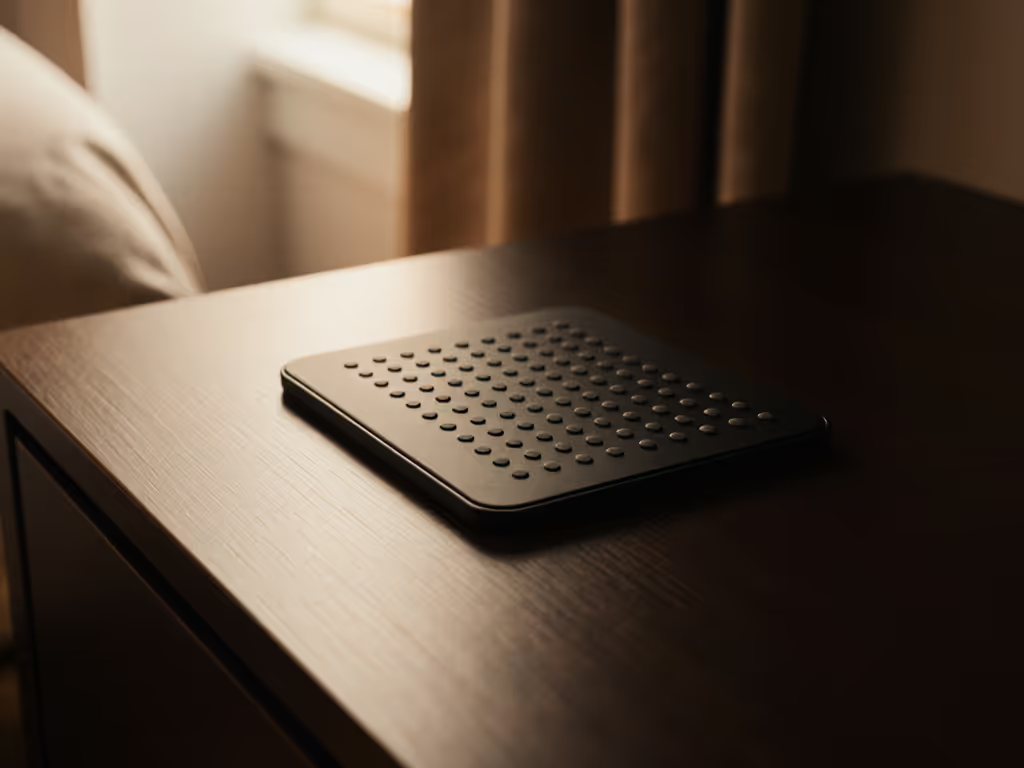
Your First Step Toward Moon-Level Calm
NASA's satellite wireless charging breakthrough wasn't about volts, it was about trust. Your home deserves that same peace. Start tonight: pick one zone (the nightstand, please) and map your zones. Remove all mystery. Label. Simplify. Hide cables. When your guest docks their phone without asking? That exhale? That's the mission success.
The moon's wireless charger clears a path for rovers. Now clear one for your living room. Because when power stops being a puzzle, it stops being a problem.

